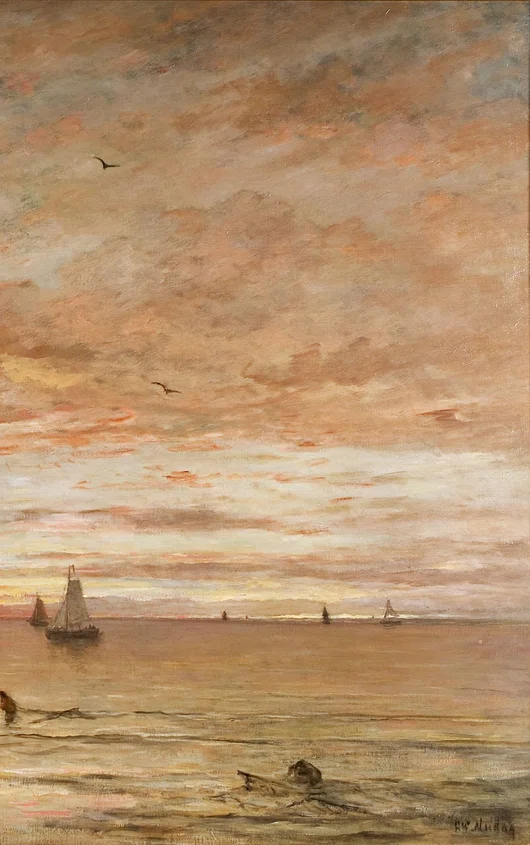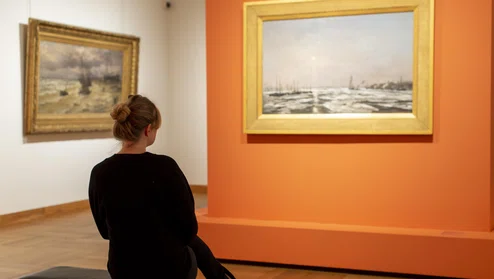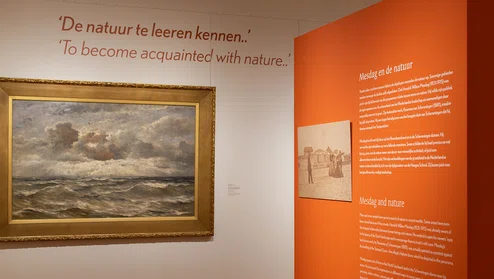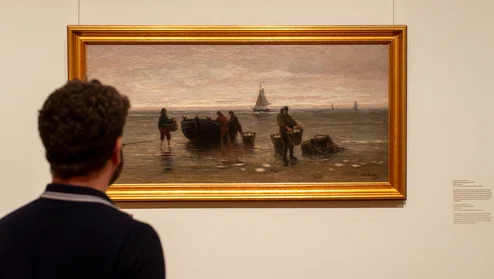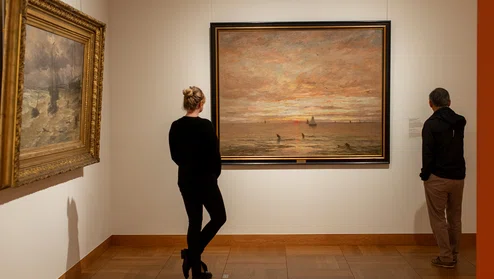The North Sea, c. 1900, Hendrik Willem Mesdag (1831–1915), oil on canvas, Museum Panorama Mesdag.
Different impressions
Mesdag spent a lot of time on the North Sea beach and in the Scheveningen dunes near his home. He processed his impressions in different ways: in some cases, he painted what he saw very precisely, while in others, nature was either a backdrop for human activity or an all-pervading force in its own right. His images of the grandeur of Dutch nature set him apart from his Hague School contemporaries, who preferred the peaceful, cultivated landscape.
The sea
Racing clouds, salt water and surging foam on a gigantic scale: this is a seascape that appeals to all our senses. Mesdag brings us very close to the violence of nature, obliging us to look at the (overly) familiar scene through fresh eyes.
‘To become acquainted with nature..’
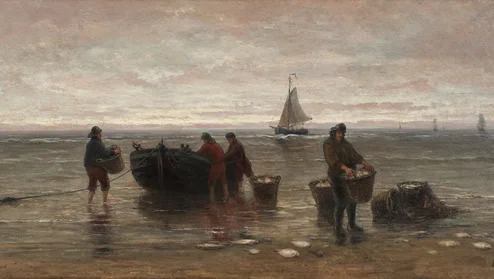
Unloading the catch, 1875, Hendrik Willem Mesdag (1831–1915), Oil on canvas, Museum Panorama Mesdag.
Development
Brussels
In September 1866, Mesdag moved with his family to Brussels to train as an artist. His teacher Willem Roelofs advised him to paint ‘fragments of nature’. Mesdag took this very literally, painting exactly what he observed and leaving out any narrative elements.
Career as a marine painter
In the spring of 1869, Mesdag and his family moved from Brussels to The Hague. He began to build his career as a marine painter in The Hague from 1870. He spent almost every day on Scheveningen beach observing the activities of the fishermen and the ever-changing light and atmosphere. In his early work, the landscape served primarily as a background for human activities as in this beach scene, in which fishermen unload their catch in baskets.
